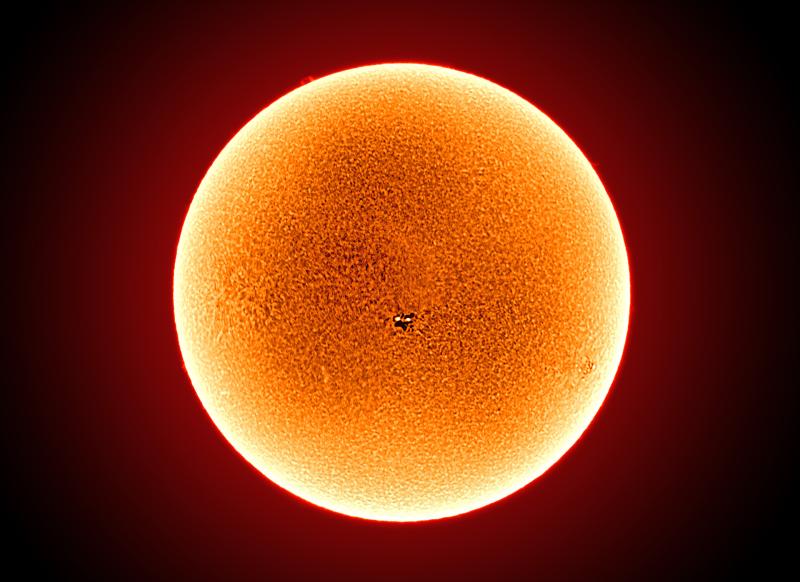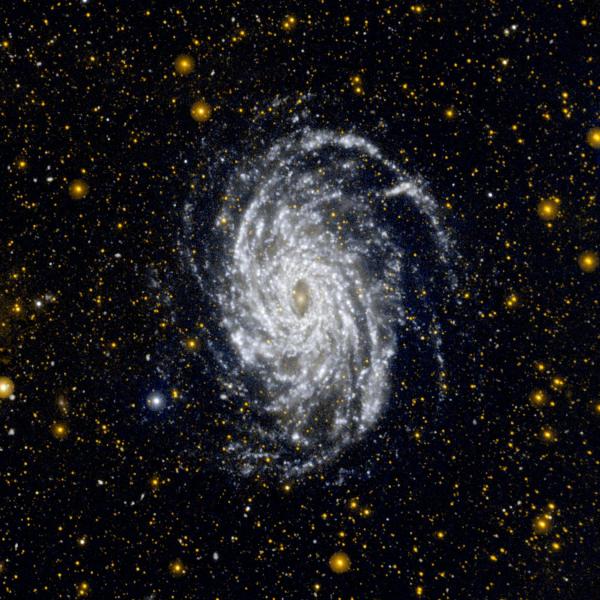
See what cosmic news our young people have found for you!
This news was researched and written by members of the Astronomy Ambassadors Group in May 2023.
Astronomy Ambassadors is for 16-21 year olds interested in space and astronomy. If you're interested in joining this group yourself, please click here for more information. We hope you enjoy the news stories we've found for you.
In the dark about Artemis? Here's lunar flashlight
by Varuni and Eloise
NASA’s Artemis missions kicked off at the end of 2022 with the grand Artemis 1, but also other, less well-known missions. The Artemis missions are all about us establishing our first colony on the Moon. In December of 2022 we saw the launch of Lunar Flashlight, a briefcase-sized satellite with many interesting technologies crammed into it. The main goal of the mission was to start mapping the water-ice at the lunar south pole using a laser reflectometer. Sadly, after five months on its mission, NASA decided to call it off; it is thought that there was debris stuck in the proppant lines and the spacecraft couldn’t get into the required orbit.
Now, this might seem pointless, and while the spacecraft failed in its main objective, it was able to test out lots of new and experimental technologies. For example, the issue of space debris and remaining environmentally ethical in space exploration is a frequently discussed topic and this spacecraft made some important steps. It was the first spacecraft to use a non-toxic, green propellant (ASCENT). It also tested a new kind of flight computer, that is suited to survive deep space radiation, which worked well. And of course, so did the laser reflectometer that would have made the water-ice measurements. This mission was important in developing the technologies that will later get us to the Moon.
Replacement Earth?
by Ben and Ember
About 90 light years away exists a planet around the size of Earth badgered with volcanoes. Enter planet LP 791-18b! This planet is split into two: one side permanently day and one side permanently night.
Unfortunately, the conditions on the day side may not be suitable to sustain life. But have no fear! Thanks to its abundant volcanic activity the potential for water to condense exists on the night side. This volcanic activity is a preeminent source in bequeathing to a planetary atmosphere and the ability to sustain life (on the planet). The main components of these volcanic emissions are water vapour, carbon dioxide and greenhouse gases which keep the planet warm.
Icy terrains – how to explore them without rovers?
By Samujjvala, Daniel and Tasneen
A new snake robot could be the solution to travelling across icy terrains like Enceladus, one of Saturn’s moons.
Enceladus is one of the most reflective bodies of the Solar System, being mostly covered by fresh ice. It is the sixth largest of Saturn’s moons and, while being relatively small (about 500km in diameter), it supplies most of the material to Saturn’s largest ring, the E ring. Gravimetric measurements as well as measurements of the libration of Enceladus in its orbit around Saturn suggests that the icy crust of the planet is detached from the core of the planet and that an ocean lies beneath the surface. Evidence of ejection of organic molecules and other carbon-bearing molecules suggests that the moon could potentially sustain life.
The robot exploring this interesting moon has rotating segments so it can twist and bend around obstacles and climb areas inaccessible by rovers. It creates a 3D map of its surroundings, similar to RADAR, using laser pulses. With the map, an advanced algorithm allows it to seek out the safest path across the terrain. The plan is for it to be completely autonomous. The project has not been approved for adequate funding yet as it’s still in the early stages of testing. NASA’s Jet Propulsion Laboratory made the initial prototype for the Exobiology Extant Life Surveyor (EELS) in 2019. The snake (EELS) is looking for signs of life in the oceans, e.g. microbes, under the ice of Enceladus. Microbes might be the indicators for future extra-terrestrial civilisations. There is a myriad of theories as to why we’ve been relatively unsuccessful so far in discovering other life forms, one of which is the Dark Forest Hypothesis. In a nutshell, this is the theory that alien civilisations do not seek to communicate with Earth's inhabitants out of fear of attack and inevitable destruction.
Scary Barbie?
Tom, Shahriar and Hanna
Roaming rogue about 8 billion light years away in the constellation Vulpecula, a supermassive black hole collided with a large molecular cloud causing an explosion that is now referred to as the most powerful astronomical event observed to date. This was identified by scientists at the Zwicky Transient Facility (ZTF) in California as ZTF20abrbeie, which was coined “Scary Barbie”, due to the similarity of the astronomical name given. The cloud of gas was drawn in by the irresistible gravitational pull of the black hole, and once the cloud was past the event horizon, it was spaghettified and violently ripped apart, exploding with energy 100 times greater than our Sun will ever emit in its lifetime. Although it wasn’t the brightest event detected, which was a gamma ray burst that lasted for mere minutes, Scary Barbie is still an ongoing fireball.
Out in the vast expanse of empty space, this event was only a blip on the scientist's radar. But when scientists at ZTF investigated closer, this event was mind-blowingly special. In fact, they deduced the explosion was too intense to be a typical supernova. Instead, they postulated this was a rare tidal disruption event. These happen when a large star/cloud gets stretched and swallowed by a black hole. However, some researchers believe this phenomenon happened because of the sudden accumulation of gas particles into a disk surrounding the black hole, called accretion. As research continues we begin to build a bigger picture of this occurrence and of the larger universe.
Banner image credit: NASA/JPL-Caltech/R. Hurt






